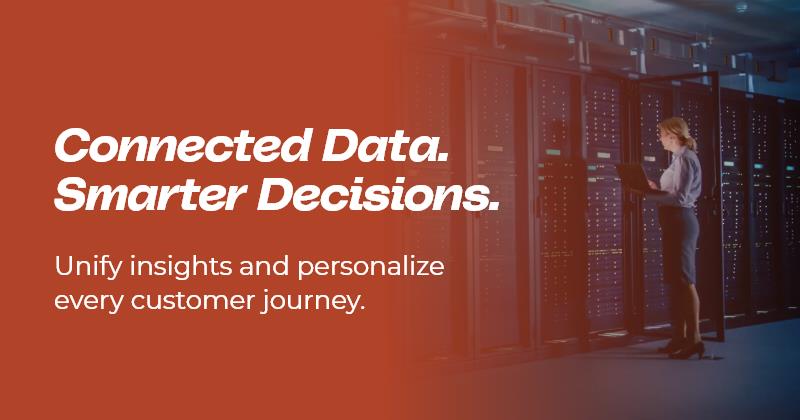Integrating Adobe Experience Cloud with Your CRM
Every interaction your business has with a customer creates data that is valuable and full of potential. The real challenge isn’t collecting it but connecting it. When marketing, sales, and service systems operate in silos, even the most insightful data loses its impact.
Adobe Experience Cloud bridges that gap. It unifies analytics, content, personalization, and automation into one cohesive ecosystem, allowing your CRM to do more than just store information. Together, they enable truly connected customer journeys, powered by real-time insights and meaningful engagement.
Adobe commissioned Forrester Consulting to conduct a Total Economic Impact™ (TEI) study, which found a 120% return on investment with a payback period of three months. The study cited benefits like improved lead management and sales-marketing alignment.
Integration isn’t just a technical move; it’s a strategic advantage that turns every customer touchpoint into an opportunity to engage smarter and grow faster.
What is Adobe Experience Cloud and Why It Matters
Adobe Experience Cloud is an end-to-end digital experience platform that brings together analytics, content management, personalization, and marketing automation into one ecosystem.
The suite includes:
- Adobe Experience Platform (AEP)
- Adobe Experience Manager (AEM)
- Adobe Analytics
- Adobe Campaign and Target
When integrated with your CRM (like Salesforce, HubSpot, or Microsoft Dynamics 365), Adobe Experience Cloud becomes the intelligence layer that connects every customer interaction, from marketing emails to post-purchase support.
Why Integrate Adobe Experience Cloud with Your CRM?
When your CRM and Adobe Experience Cloud work together, your organization gains:
- Unified Customer Profiles: Consolidate sales, marketing, and behavioural data into a single view.
- Personalized Experiences: Deliver dynamic, context-aware messaging at every customer touchpoint.
- Automated Journeys: Create trigger-based workflows that respond in real time to user behaviour.
- Smarter Decision-Making: Use analytics and AI insights to fine-tune marketing and sales strategies.
- Increased ROI: Optimize campaign spend and measure performance more accurately.
Step-by-Step Guide: How to Integrate Adobe Experience Cloud with Your CRM
Here’s how businesses can seamlessly connect Adobe Experience Cloud with their existing CRM systems:
Step 1: Define Objectives and Map Data Sources
Start by identifying what you want to achieve, better segmentation, improved campaign performance, or end-to-end visibility.
Map customer data sources such as leads, email interactions, sales touchpoints, and web behavior to align with Adobe’s data schema.
Step 2: Connect Adobe Experience Platform (AEP) with Your CRM
Use Adobe Experience Platform connectors or native Adobe I/O APIs to sync CRM data in real time.
- For Salesforce CRM, use the Adobe Experience Cloud for Salesforce connector.
- For Microsoft Dynamics 365, leverage Power Automate integration with AEP.
- Use Adobe Workfront Fusion for workflow automation across systems.
Step 3: Enable Real-Time Data Flows and Identity Resolution
Activate Adobe Real-Time Customer Profile to merge CRM data with marketing and behavioural insights. This creates a single source of truth, allowing you to track every customer interaction across web, mobile, email, and offline channels.
Step 4: Integrate Adobe Analytics and Adobe Campaign
- Connect Adobe Analytics with CRM to measure lead quality, attribution, and customer lifetime value.
- Sync Adobe Campaign with CRM to automate follow-ups, nurture flows, and sales triggers based on behavioral data.
Step 5: Personalize with Adobe Target and Experience Manager
Use Adobe Target to run personalized campaigns based on CRM insights, adjusting offers and recommendations dynamically. Integrate Adobe Experience Manager (AEM) to manage and deliver contextual content across digital channels.
This synergy helps teams deliver real-time personalization—backed by unified intelligence and consistent brand storytelling.
Step 6: Monitor and Optimize
Set up dashboards in Adobe Analytics or Power BI (via Adobe connectors) to track engagement, conversions, and ROI. Establish a continuous feedback loop to refine audience segments, campaign automation, and personalization strategies.
Claritus’ Approach to Adobe Experience Cloud Integration
As an Adobe Gold Partner, Claritus delivers seamless Adobe Experience Cloud integrations that unify data, personalize customer journeys, and scale engagement across digital channels. With deep expertise in AEM, Target, and Analytics, we guide organizations from strategy to deployment.
Our success across industries like retail, BFSI, healthcare, and e-commerce ensures rapid, low-disruption integrations tailored for enterprise scale. At Claritus, we connect not just systems but stories, data, and experiences to drive acquisition, retention, and loyalty.
Our approach includes:
With Claritus, integration isn’t just technical – it’s transformational.
Ready to Unify Your Customer Experience?
Let’s help you unlock the full power of Adobe Experience Cloud.











